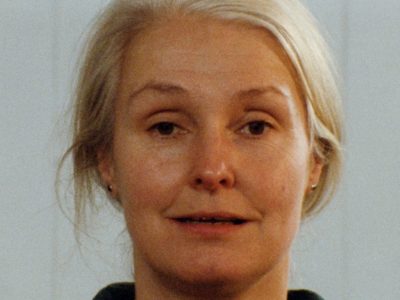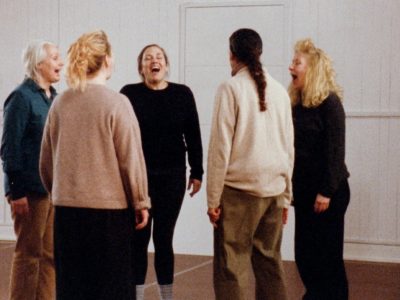DP for Wendy Kirkup, untitled 16mm film








Frames from a selection filmed at Glasgow Theatre and Arts Collective, Govan, Glasgow 31 October 2021 for artist and filmmaker Wendy Kirkup for a R&D Open Project Award from Creative Scotland toward a new film project on 16mm. In a room that looks an inverted ship’s hull, while COP 26 was whirling around our heads. Improvisational vocal workshop led by Nichola Scrutton and for me acting as DP on images of its listening, waiting, the gradual emergence of something, collaborative energies, voices occupying spaces, voices as volumes, and this shared dynamic female space; a technical act too of capturing the performed/moments and my twin eye notion when filming, of two eyes behind the lens, and the discussions that took place with Wendy on making these images. I think about that role of artist/technician/DP and what that means to my practice moving forward. I am deeply proud of this project and my work within, especially these images. They reminded me of Lovely Young People (2012) by Rosalind Nashashibi, much rawer than the resolutions of her camera on seeing, presence, bodies and looking and private/public. Shared/individual, chain reactions, sound, breath and bodies making images, following eyes following sound, and also something about an economy of image-making and paring back which makes something else incredibly vivid.
16mm colour film, 2021, DP: Alex Hetherington, from a R&D Open Project Award from Creative Scotland, 2021-2022, film stills courtesy of Wendy Kirkup
The workshops were around ideas of ‘listening’ (with ref. to Pauline Oliveros)
What’s the difference between the footage and the stills?
- The still images are not documentation of a performance and nor are they a film – so how to think of them?
- How many spaces operating here: the actual space and time of the room, the space and time of the footage and the space and time of the frame in the still image. Each has its own distinct (although overlapping) arena.
- Within real space and time the ‘performers’ (I’m not sure this is the best way to describe them) listened and responded to each other.
- In the stills and the footage, we see them listening to each other but also to us behind the camera, and we to them, we become interleaved within the performance space(s)
- Which moment to choose from the footage? We ‘read’ their gestures and the energy the photo contains.
Frame:
- Framing and how it changes the time and space?
- The space of the room shifts to the space of the frame. How is this now changed in relation to us and each other and how we (viewer) are addressed (or not)?
- In the footage we are looking at action. With the stills perhaps we are somehow looking more at the person?
- Rather than reading the action between the individuals within the group we are now reading between each of the the images in still form, which allows for more time for contemplation of the single image and they way they are sequenced.
- The close up draws us near so we are able to see the facial gestures closely – the way the eyes are just about to move, or a moment of anticipation, a non-verbal communication etc
- What the camera sees but we, in the moment, and with our human eyes, may only register unconsciously (or not) (I’m thinking of ‘24 Hour Psycho’ here)
- We intimately see details of the subjects face which we can’t see in wider shots which, cinematically, can create a strong emotional connection – and I think does here.
- It helps see things from the ‘performer’ perspective – what they are thinking/feeling at the time of shooting
- Their eyes look both within frame and out of frame (as we do). Out of frame implies external action, including that of the imagination.
- The reading between images in the stills – and more time for contemplation
